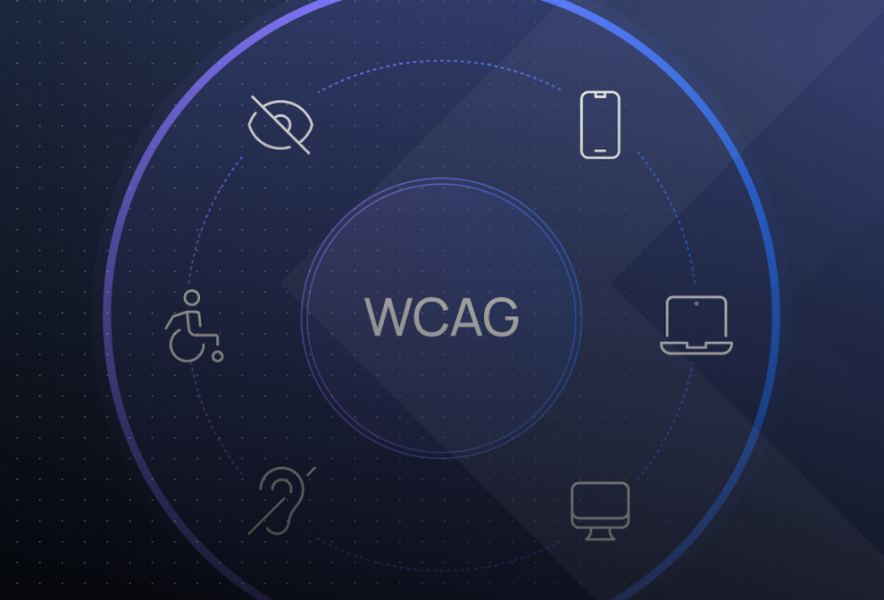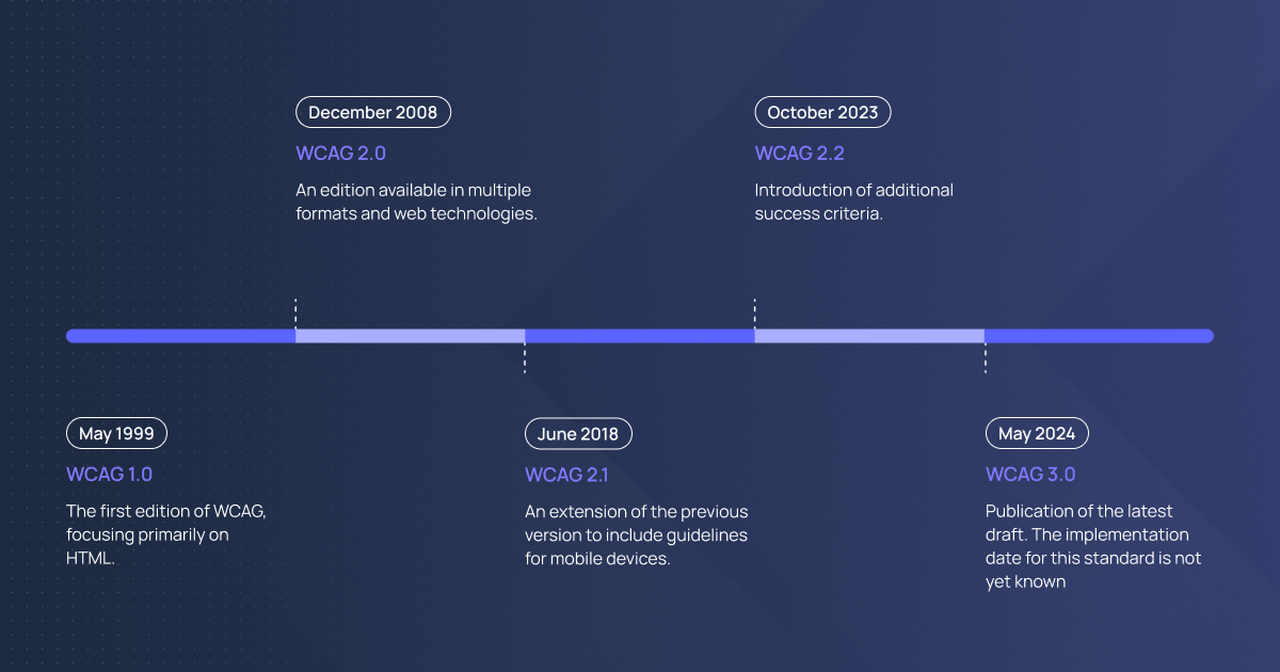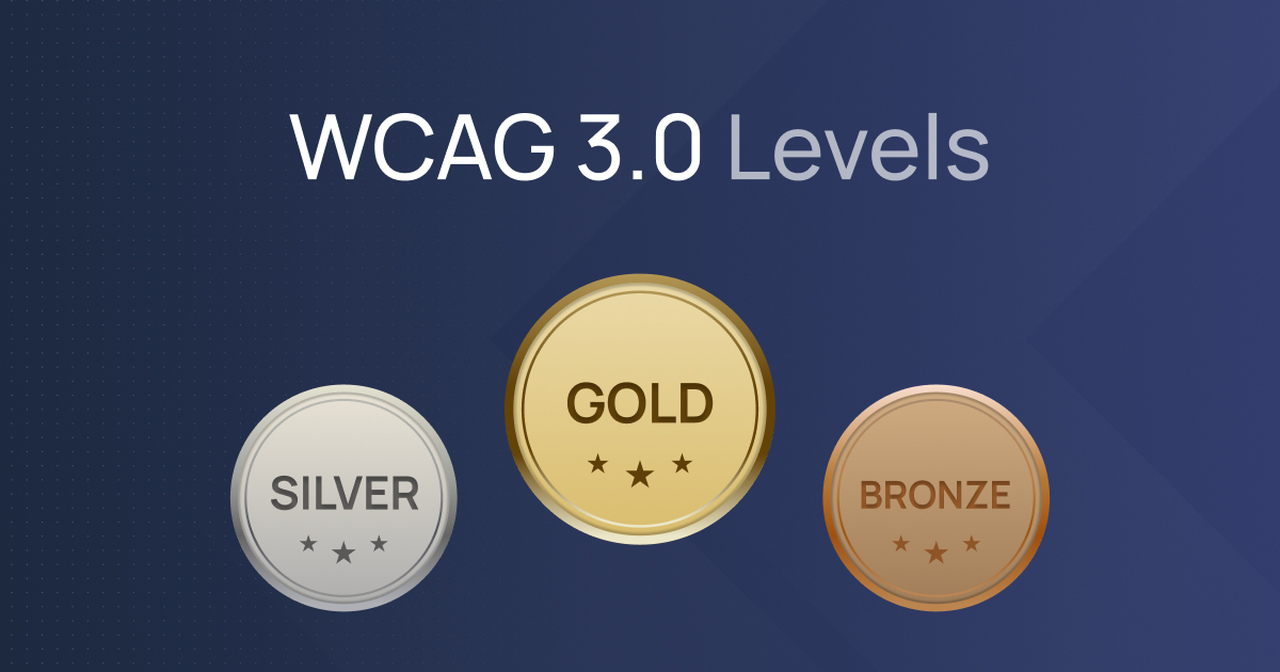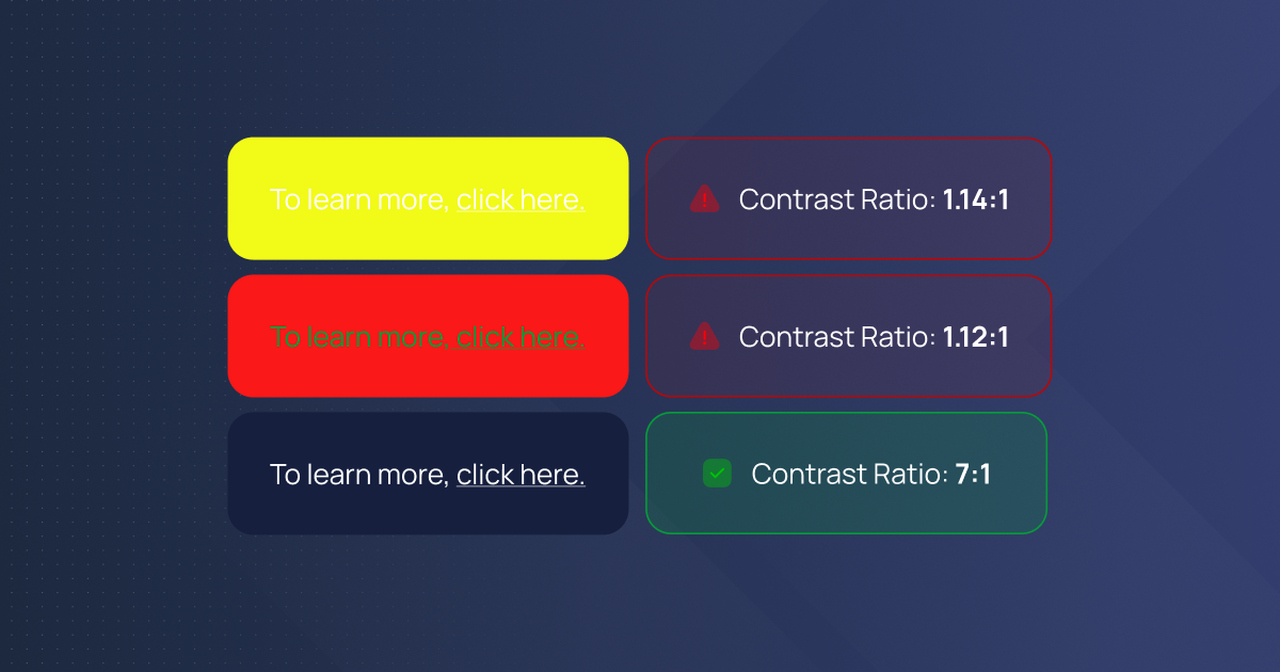
WCAG (Web Content Accessibility Guidelines) is an international digital accessibility standard for public sector websites and mobile applications. It aims to ensure that online content is accessible to all users, including people with disabilities. Why is this an important issue for modern organisations and what should you know about it?
Adhering to WCAG is crucial for any web accessibility policy, ensuring that all users, including those with disabilities, can access online content.
The Web Content Accessibility Guidelines (WCAG) are a set of guidelines developed by the World Wide Web Consortium (W3C) to ensure that Web content is accessible to people with disabilities.

WCAG history
The first version – WCAG 1.0 – was published on 5 May 1999. Initially, it focused primarily on HTML and addressed two main aspects:
Making content understandable and easy to navigate
Introducing so-called “graceful degradation“, an approach that provides a limited version of a given functionality or informs the user of specific product limitations, thus ensuring usability for all users.
The next full version was published on December 11, 2008. The most significant change introduced with this standard was that the WCAG 2.0 guidelines became technology agnostic, allowing them to be applied across different web formats and technologies.
WCAG 2.1 was released on 5 June 2018. This update expanded on the previous version by adding guidelines for accessibility on mobile devices and for people with cognitive disabilities and visual disabilities.
The latest version – WCAG 2.2 – was published on 5 October. It introduces additional success criteria and focuses on improving accessibility for users with cognitive disabilities and those using mobile devices. The updates also emphasize the importance of meeting level AA success criteria, which are crucial for ensuring accessibility compliance across various jurisdictions.
WCAG 2.2, as an extension of the previous version, introduces accessibility improvements over WCAG 2.1, focusing on three user groups: people with visual impairments, people with cognitive problems or dyslexia, and people who have difficulty using mobile devices.
WCAG 2.2 also introduces new testable success criteria, which provide measurable checkpoints to assess conformance and effectiveness in achieving accessibility.
WCAG 2.2 is backward-compatible with versions 2.0 and 2.1, which means that compliance with WCAG 2.2 also meets the earlier guidelines. If your organisation is currently WCAG 2.1 compliant, the following changes need to be considered to bring your organisation into compliance with WCAG 2.2.
New Success Criteria introduced in WCAG 2.2:
WCAG 2.2 has also removed one of the criteria from previous versions:
To meet the requirements of WCAG 2.2, an organisation should analyse and adapt its websites and applications according to the above criteria. It is also important to train staff responsible for creating and maintaining digital content on the new guidelines.
WCAG 3.0 is a set of recommendations to improve the accessibility of web content for people with disabilities. It builds on previous versions and introduces significant changes to the structure of the guidelines and the approach to digital accessibility.

WCAG 3.0 levels
The latest draft of the WCAG 3.0 guidelines was published on 28 May 2024. However, there is no specific information as to when this standard will become mandatory.
New structure and terminology: WCAG 3.0 introduces a new structure consisting of guidelines, outcomes, methods and tests. This approach aims to better align the process of ensuring accessibility with different technologies and user needs.
The guidelines also set new standards for visual presentation, ensuring that text and images meet specific contrast ratios for readability and accessibility.
Flexibility: The new guidelines are more flexible, allowing for more frequent updates and adaptation to rapidly changing technologies and accessibility challenges.
New compliance rating model: WCAG 3.0 replaces the previous compliance levels (A, AA, AAA) with new levels: Bronze, Silver and Gold, to provide greater flexibility and transparency in assessing accessibility.
Broader scope: The guidelines now cover not only web content, but also applications, tools, electronic publications and emerging technologies such as virtual and augmented reality.
Consideration of a wider range of disabilities: WCAG 3.0 places greater emphasis on the needs of people with a range of disabilities, including cognitive and visual impairments, to create a more inclusive web.
As of 2022, significant changes in digital accessibility will be implemented in Poland, in line with the guidelines of the European Accessibility Act (EAA). The obligation to ensure digital accessibility applies primarily to public institutions – government bodies, public financial institutions and legal entities. Compliance with WCAG 2.2 standards applies to both websites and mobile applications of these entities.
The act mandates that all web pages of these entities must conform to the established WCAG guidelines to ensure accessibility for users with disabilities.
Polish organisations are required to fully implement the EAA Directive by 2025. This includes adapting not only websites, but also mobile applications.
The aim of the directive is to remove digital barriers and ensure that every user can freely use technology, regardless of their abilities or needs. While private companies are not directly required to comply with WCAG, implementing these standards will benefit them by improving the accessibility of their services and expanding their potential customer base.
According to the World Health Organization (WHO), approximately 15% of the world’s population, or over one billion people, have some form of disability. Other data, particularly from the United States, suggests that around 75% of people with disabilities use the internet every day. It is important to note that in 2023, over 96% of the most visited million websites had accessibility issues related to the needs of people with disabilities.
According to 2023 Eurostat data, in Europe, up to 27% of the EU population aged 16 and over had some form of disability. This means that more than 100 million EU citizens could face difficulties in accessing digital content, depending on the type of disability they have.
In Poland, this problem could affect up to 7 million people.
Although no specific studies have been conducted on how many Internet users will benefit from the implementation of WCAG in organisations, it is safe to assume that a large proportion of people with disabilities (e.g. motor, visual, cognitive) will experience varying degrees of difficulty in accessing digital content. This includes ensuring that significant other visual content, such as images and videos, is accessible to users with various disabilities.
Every organisation subject to the requirements of WCAG must produce an accessibility statement – a document describing the status of the website’s compliance with the guidelines. It includes information about the success criteria met, such as accessibility of navigation, colour contrast and text readability.
Each success criterion defines specific, measurable requirements that web content must meet to be considered accessible.
A WCAG audit evaluates 50 criteria. Not all of them need to be met for the conclusion to be considered to meet the needs of people with disabilities.
WCAG success criteria are specific, measurable requirements that web content must meet to be considered accessible to people with different disabilities. Each of the 13 WCAG guidelines has associated success criteria, which are grouped under four principles: perceivability, operability, understandability and robustness.

WCAG contrast ratio
WCAG 2.2 accessibility criteria include four main categories:
The success criteria are divided into three levels of compliance:
Implementing the WCAG standards in organisations, particularly in the banking sector, requires adapting the processes for designing and building websites and mobile applications. The most important part of this process is training employees in digital accessibility so that they can effectively apply the WCAG guidelines.
It is important to ensure that color is not used as the only visual means of conveying information, as this can create accessibility issues for individuals with visual impairments.
In addition, WCAG implementation can be supported by various tools and technologies, such as browser plug-ins, that help monitor accessibility and improve digital products.
By taking these steps, organisations can not only meet legal requirements, but also ensure that their services are accessible to a wide range of users.
Conformance of services and Web sites to the WCAG standards brings a number of benefits. The most important is undoubtedly improved accessibility for users with disabilities. Ensuring a particular presentation of visual elements is crucial for maintaining their intended meaning and functionality, especially for users with disabilities.
This action can also significantly improve the company’s image by creating a reputation as an open and responsible organisation. It allows you to reach a larger number of users and increase their confidence as they appreciate the accessibility of online services.
In addition, compliance with WCAG guidelines helps organisations avoid fines and sanctions related to non-compliance with accessibility requirements. Implementing these standards not only meets the needs of customers, but also protects the organisation from potential legal consequences.
Ensuring digital accessibility for websites and mobile applications is not a one-off task. It is an ongoing process that requires continuous education and training in accessibility.
Regularly monitoring compliance on each web page is essential to ensure ongoing accessibility.
To meet user expectations, it is essential not only to implement standards within the organisation, but also to regularly monitor compliance on websites and in applications.
Not sure where to start? Contact our experts who will help you understand this topic and show you how Eximee can help your bank!